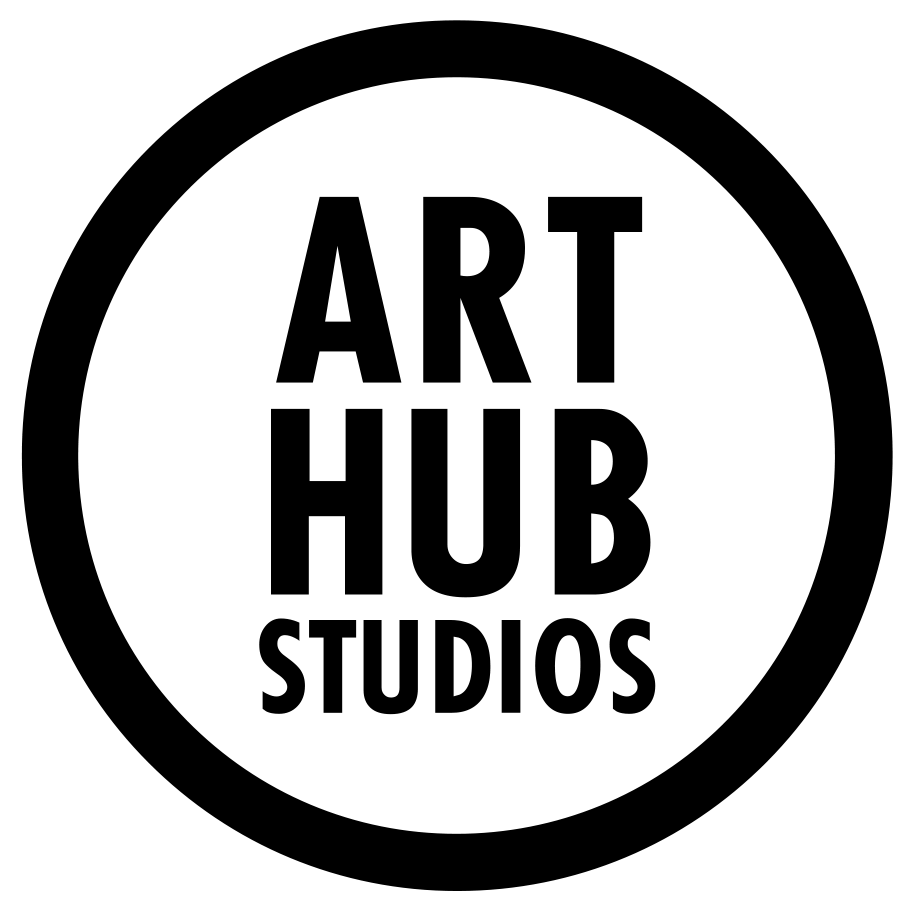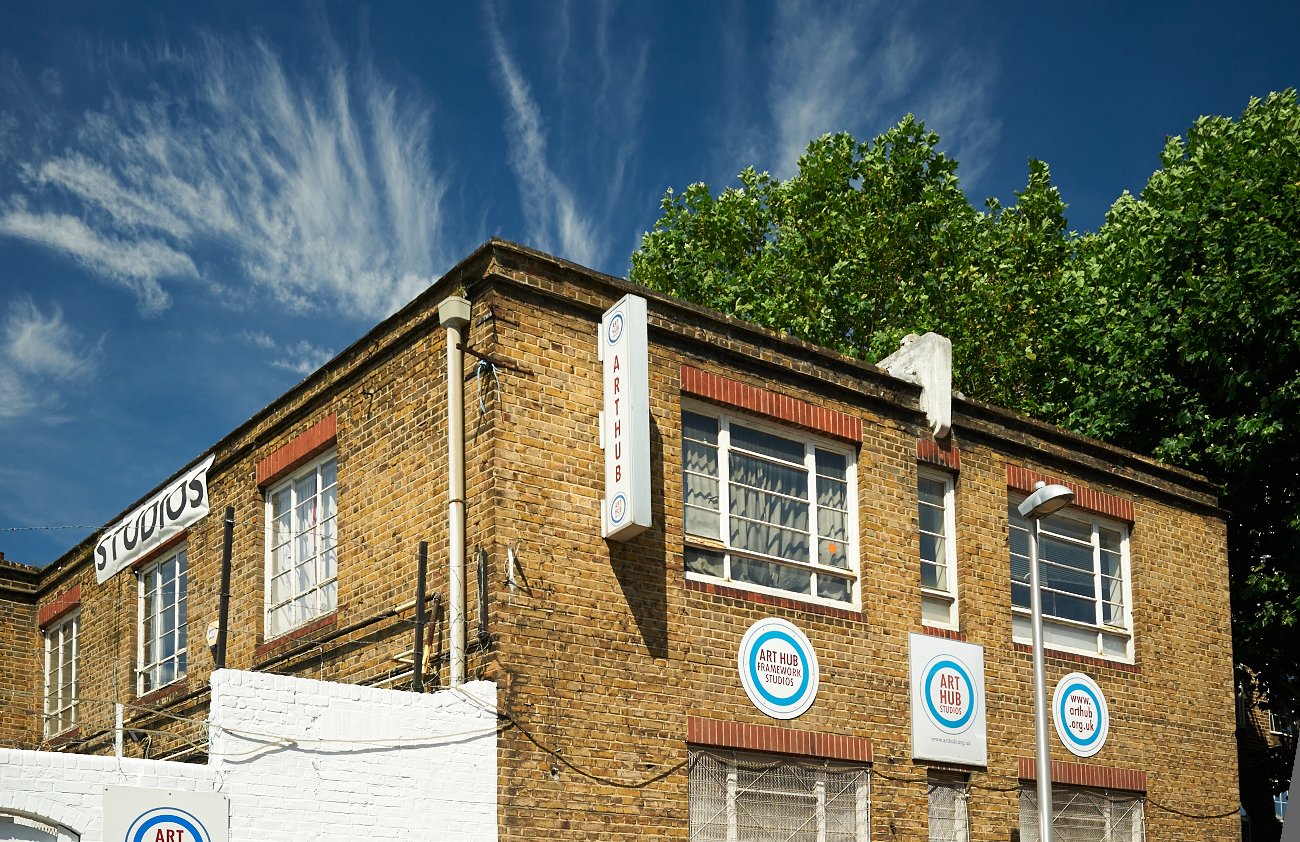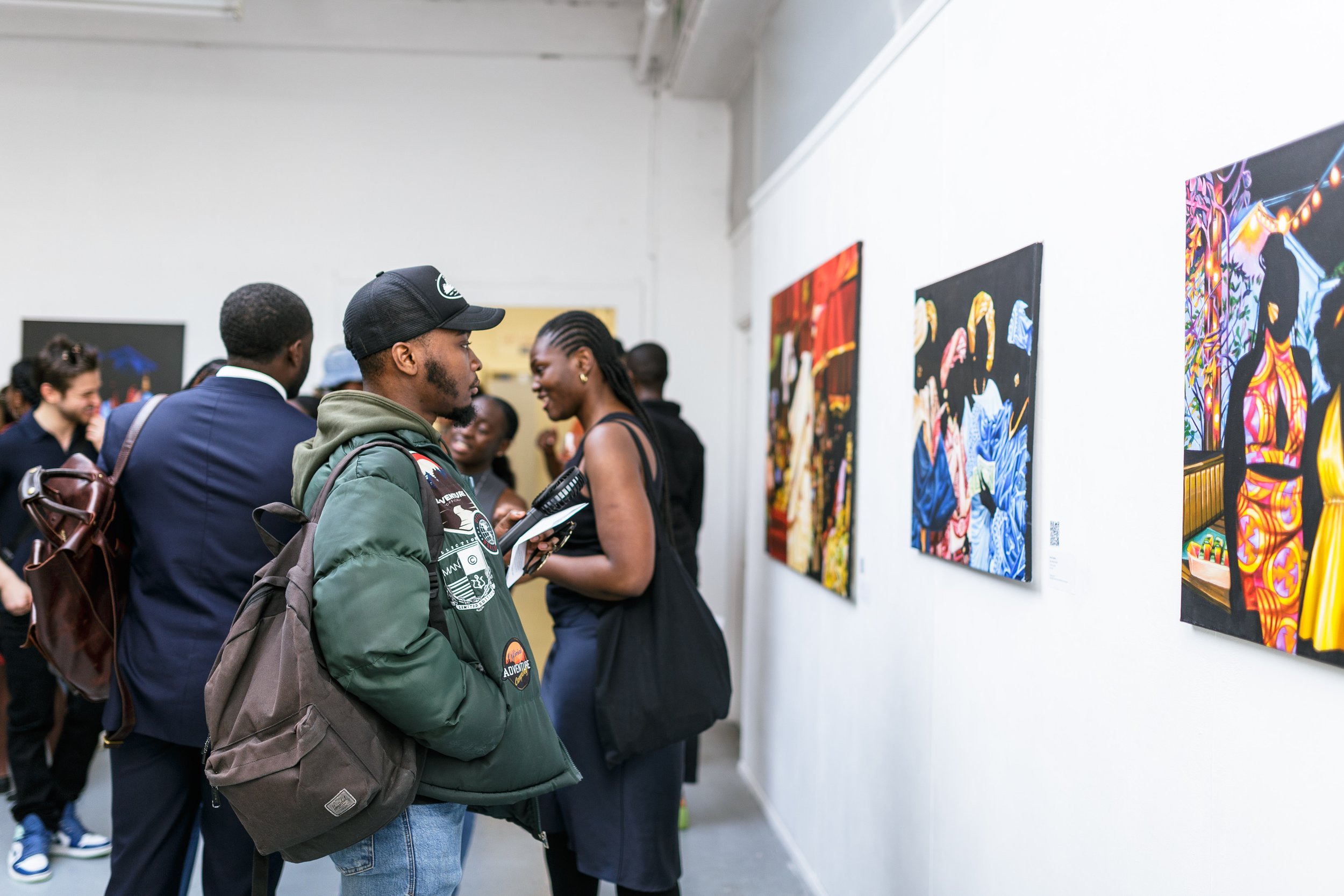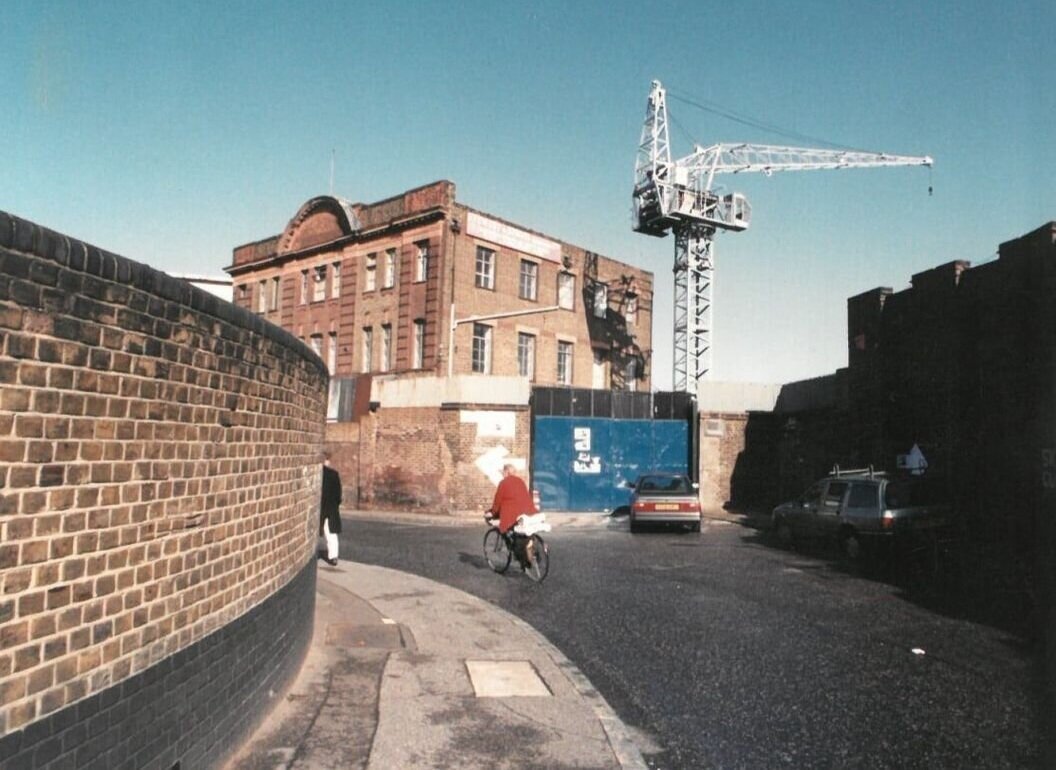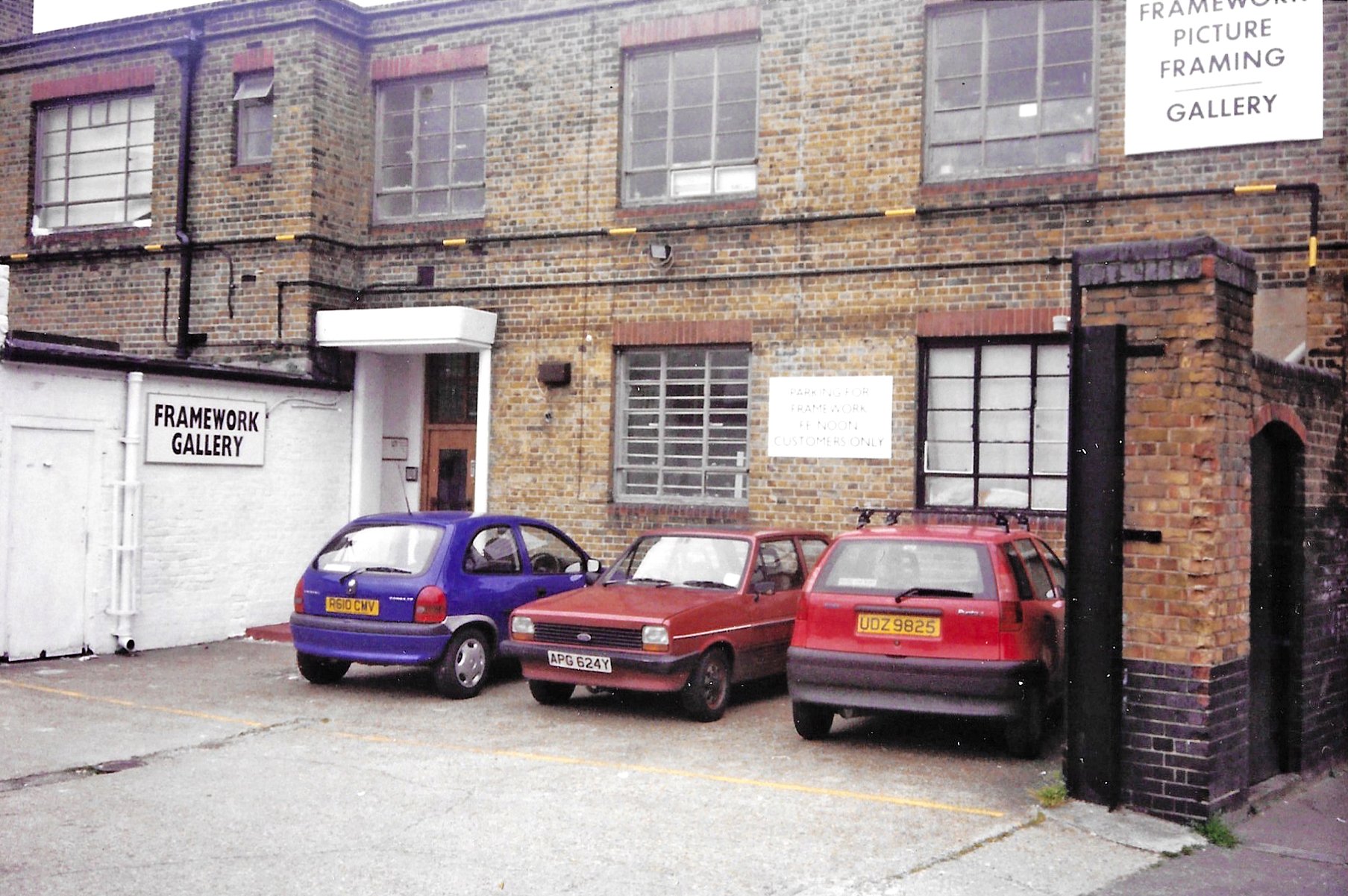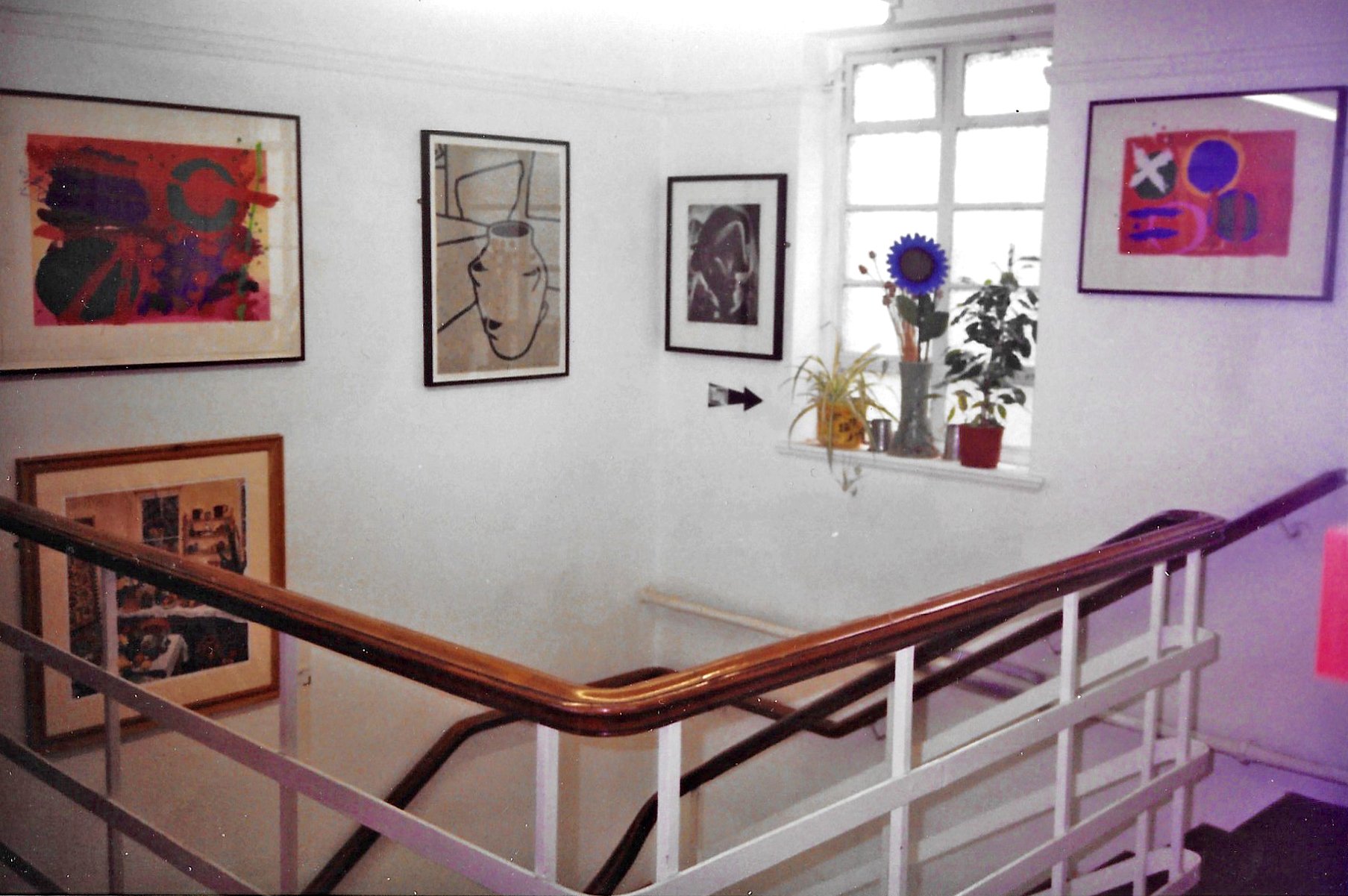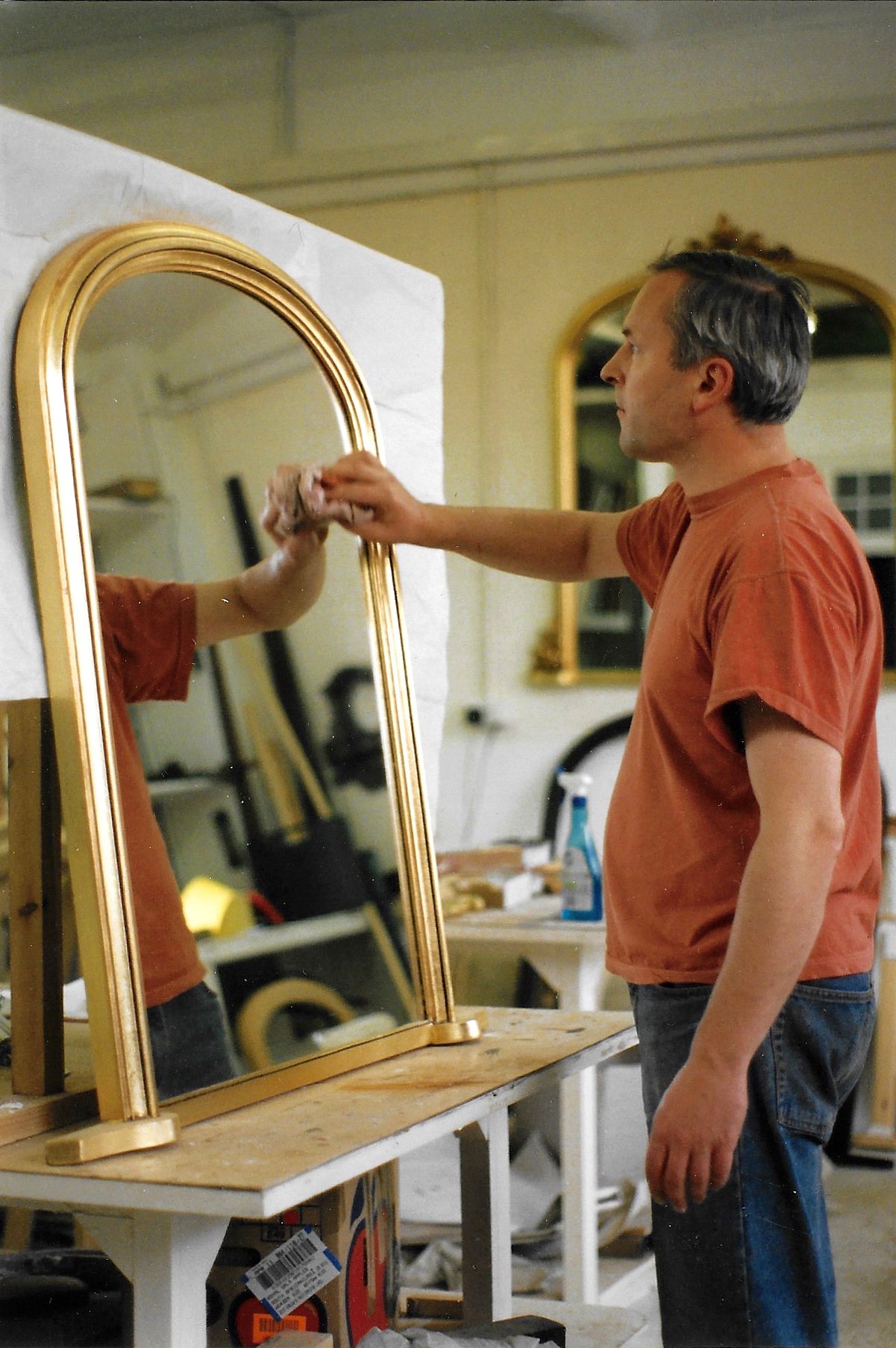History.
Art Hub Studios was founded on Creekside in 1999 by two artists, Deb and Adrian, who are still the directors today. Next year will mark 25 years of Art Hub Studios on Creekside, but the anniversary will also signal the end of an era. In 2025 the building will be demolished and redeveloped into student accommodation and three floors of new commercial space. This will be the loss of another industrial building and an artist space that has been part of the creative community in the area, continuing the dramatic changes that have taken place along Creekside over the last two decades. Other redevelopment plans in the pipeline include 3 Creekside as well as the iconic Birds Nest Pub, a longstanding landmark for the area.
When Deb and Adrian first came to Creekside in the 80s, it still had cobbled streets, and unless you lived or worked there it was somewhere many avoided. However, due to cheap rent on large old warehouse buildings, and its proximity to colleges like Goldsmiths, a community of artists and musicians began to move into the area. In 1988 Deb and Adrian set up a framing business in the Faircharm Trading Estate on Creekside. At the same time other artists moved onto the Estate, forming studio collectives and galleries including Core Blimey and Creekside Artists. They became a natural clientele for the framing business and the business took off. Over the years other studio groups moved into the area and acquired freehold purchases on Creekside, including A.P.T. (1995) and Cockpit Studios (2002). APT provides 42 studios for visual artists, a contemporary art gallery and working sculpture yard, while Cockpit focuses on supporting traditional craftspersons and growing their trade into successful businesses.
After 11 years on the Faircharm Trading Estate, Deb and Adrian moved into a bigger industrial warehouse at 5-9 Creekside. The building is notable for its corner position, with Art Deco offices to the front and original hoist (crane) to the rear, visible from the street and DLR. In the new building Deb and Adrian found themselves with more space than required. With a growing network of artists needing space, Art Hub Studios was formed and organically grew to house 75 artists alongside a community gallery. Moving out of the Faircharm Trading Estate proved a good decision as a few years later the building was sold and redeveloped into what is now the Fuel Tank. The development resulted in the closure of the studio groups and galleries who remained with many displaced artists needing new homes.
During the 2000s the excitement of digital technologies meant colleges and art schools often wanted to get rid of their traditional art and crafts equipment, to make way for computers. Art Hub Studios found themselves being offered a range of specialist art equipment which would otherwise be thrown in the skip. Printing presses from Lewisham College and Greenwich Community College were saved, along with darkroom enlargers from Ravensbourne and kilns from Wimbledon. With an ever increasing demand for studios and a need for more space, the equipment was incorporated into the studios at a new industrial building in Woolwich, next to the Thames Barrier, with artists who had studios in the building getting free use of this equipment. This created the unique offering of studios and all inclusive art facilities which continues to this day. Art Hub Studios now houses 290 creative practitioners and businesses across Deptford and Woolwich, alongside a growing gallery and outreach programme. As the studios grew Deb and Adrian handed over the framing business to a fellow artist so they could concentrate on navigating the studios through the next 10 years. The organisation is still run in its original format today, with both Deb and Adrian as directors, and a small team of local artists running the studios on a day to day basis.
The challenges of running artist studios are the same as any other business, but the community it builds adds meaning, and motivates those who work in the industry where money isn’t the incentive. A traditional approach to establishing artist studios involves seeking out buildings with affordable rent due to their subpar condition and less desirable locations. These spaces are then partitioned into smaller units and offered to artists for rent. Keeping rental costs for artists at the lowest possible rate in order to safeguard affordable studios whilst also the upkeep of old buildings that are slowly deteriorating continues to be more challenging in a city where costs are only going up. As landlords increase rent, studio groups are under pressure to either pass this on to the artists or ultimately close down when costs become too high.
This long-standing studio model is becoming unworkable in a city where space is at a premium and older industrial buildings are either redeveloped into much needed housing or revamped for higher-value creative industries such as architecture, media firms and offices. Studio providers are now having to look at new models in order to push against the tide that forces them out of cities. As a result studio groups who bought their buildings many years ago, or groups with a wider property portfolio can survive, and smaller local studio providers are being lost.
The definition of affordability remains a challenge, it is simply the case that many so-called “affordable” options are anything but. What artists can afford hasn't changed much over the years. Similar to affordable housing, a percentage below market rate is used to define affordability. However, when the market rate can be double what is viable for running affordable studios it can’t bridge the gap between what artists can pay and what landlords want.
While having extra space might seem like a luxury, for many artists it is indispensable to their creative practice. Art creation can often be a solitary pursuit, and having a shared workspace where people gather fosters a sense of community and vital connections.This communal environment is not only essential for the flourishing of the arts but also for the well-being of the local area through the culture and community they generate. Affordable studios allow artists to pursue their practice when work can be precarious and artists often have other jobs to support their living. The loss of affordable studio spaces is an extension of the lack of understanding that the everyday culture we absorb through tv, music and art is a result of supporting talent from an early stage. Demonstrating the value of the arts is an ongoing fight. Increasingly the current system does not support people from early stage to higher education and into a career in the arts. This does not bode well for creative culture in this country.
Despite all this there might be a future for spaces like Art Hub Studios. Through working with the council they are looking to move into a new building along the same road. In order for this to be possible the studio is looking to raise money for the fit out costs to build new artists studios and secure a long term space that will provide improved affordable studios for local artists. If we as a community can recognise the value and importance of places like this hopefully more policies can be put in place to protect these spaces. This article is a call out for help to protect affordable workspaces that are being lost and support the creative community that is vital to South East London.
Help us support more people
Contact
Studio Enquiries
studios@arthub.org.uk
Locations.
We are based across two sites in Deptford and Woolwich
Woolwich.
Studios + Printmaking, Ceramics, Carpentry
Building 28 (Large Goods Lift)
Building 77 (Passenger Lift)
Westminster Industrial Estate, Woolwich, SE18 5TF (No step free access)
Stations: Charlton: 15 mins walk
Buses: 161 177 180 472
Deptford.
Studios + Gallery
5-9 Creekside, Deptford, SE8 4SA
Stations: Deptford Bridge - 5 mins walk / Deptford - 10 mins walk / New Cross - 15 mins walk
Buses: 42 53 177 225 453
